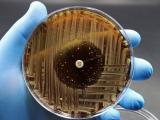Sep 23, 2011
Study finds 56% flu vaccine effectiveness in preschoolers
Influenza vaccination in children under 5 was 56% effective in preventing lab-confirmed flu, according to US researchers studying children in three states. The study, published in Vaccine, included data over two consecutive flu seasons for children in three urban counties that include Rochester, N.Y., Cincinnati, and Nashville, Tenn. The study population comprised 158 children aged 6 to 59 months of age with lab-confirmed flu and 370 matched controls. Over both the 2005-06 and 2006-07 seasons, vaccine effectiveness (VE) for the entire cohort was 56% (95% confidence interval [CI], 25%-74%). It was the same for the 24- to 59-month-old subgroup (95% CI, 3%-80%) and 61% for the 6- to 23-month-old subgroup (95% CI, 16%-82%). VE estimates were significant only for fully vaccinated children aged 6 to 23 months in the 200506 season and 6 to 59 months in the 2006-07 season; they were not significant for partial vaccinations. The
authors conclude, "Our study supports recommendations from the CDC [US Centers for Disease Control and Prevention] to vaccinate young children against influenza disease and highlights the importance of full vaccination, since partial vaccination showed no significant VE."
Sep 21 Vaccine abstract
UK allows prescribing antivirals to wider group in flu outbreak
British general practitioners (GPs) will be allowed to prescribe oseltamivir (Tamiflu) and zanamivir (Relenza) to patients not in at-risk groups in the next influenza crisis, the country's Department of Health (DH) announced, according to the GP-based Pulse today. Under the policy change, the UK's chief medical officer can give GPs the go-ahead to prescribe the antiviral drugs to those not in at-risk groups if a flu outbreak warrants it. In addition, the DH announced that it had stockpiled an extra 2 million doses of flu vaccine to guard against shortages, as happened last flu season.
Sep 23 Pulse article
Recommendations for global antimicrobial resistance
The Transatlantic Taskforce on Antimicrobial Resistance (TATFAR), a European Union and United States collaboration, today published 17 recommendations for combating global antimicrobial resistance that fall into three key areas: (1) appropriate therapeutic use in humans and animals, (2) prevention of drug-resistant infections, and (3) boosting development of new antimicrobials. This is the first report from TATFAR, which was established in 2009 by an EU-US Summit Declaration. Examples of specific recommendations include convening an EU-US working group to propose standards for measuring antimicrobial use in hospitals, developing a process for transatlantic communication of events that may signify new resistance trends, and strongly considering establishing incentives to stimulate antibacterial drug development. The report is published on the Web site of the European Centre for Disease Prevention and Control (ECDC), which provides
administrative support for the task force and publishes its updates. In a news release today, the ECDC said the agency "will fully support the implementation of some of the recommendations made in the report, together with the [CDC], the EC Directorate-General for Research, and other stakeholders."
Sep 22 ECDC news release
Sep 22 TATFAR news release
Sep 22 TATFAR report
Study: Flu vaccine safe for adults with sickle cell disease
Flu vaccination is safe for adults with sickle cell disease, according to a study from Colorado researchers who looked at 15 years' worth of vaccine data. They wanted to explore the relationship between hospitalizations and flu vaccination after their earlier investigation in young children, published in 2006, found a possible link between receipt of seasonal flu vaccine and sickle cell crisis. To assess if a similar connection might exist in adults, they analyzed reports from 1991 to 2006 in the CDC Vaccine Safety Datalink of adults age 18 and older who were hospitalized for sickle cell crisis. They found no significant association between vaccination with the trivalent inactivated flu shot and hospitalization for sickle cell crisis in the 2 weeks after flu vaccination. The incident rate ratio was 0.92 (95% CI, 0.66-1.28). They said their study is the first large post-licensure study of the safety of flu vaccine in adults
with sickle cell disease. The group has a similarly designed study in children in press in the journal Pediatrics, which will suggest that the vaccine is also safe for young patients who have sickle cell disease.
Sep 17 Vaccine abstract






















